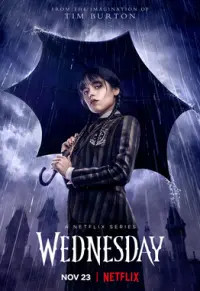The Netflix series “Wednesday” took the internet by storm in late 2022, and among its many captivating elements, one scene stood out, becoming an instant viral phenomenon: Wednesday Addams’ uniquely quirky dance at the Rave’N dance. This gothically graceful sequence, performed by Jenna Ortega, wasn’t just a fleeting moment of entertainment; it sparked a global dance craze and offered a deeper glimpse into the enigmatic character of Wednesday, a figure often associated with nihilism. But can a character who seemingly embodies meaninglessness create such a meaningful cultural impact? Let’s delve into the Wednesday Addams dance and explore its fascinating contradictions.
 Jenna Ortega as Wednesday Addams in the Netflix series, showcasing her iconic pale complexion and braided hairstyle
Jenna Ortega as Wednesday Addams in the Netflix series, showcasing her iconic pale complexion and braided hairstyle
The dance itself is a masterclass in character expression. Jenna Ortega, who portrays Wednesday with captivating deadpan delivery, revealed that she choreographed the dance herself, drawing inspiration from 80s goth club dancers, Siouxsie Sioux, and even Bob Fosse. The result is a mesmerizingly awkward yet undeniably cool routine. It’s far from the typical polished, synchronized dances seen in teen dramas. Instead, Wednesday’s movements are jerky, angular, and intensely individualistic. She bobs her head, waves her arms, and stomps her feet with a complete disregard for conventional dance aesthetics. This deliberate unconventionality is precisely what resonated with millions.
The virality of the Wednesday dance is undeniable. Clips from the scene flooded social media platforms like TikTok and YouTube, spawning countless recreations, memes, and discussions. The hashtag #WednesdayDance accumulated billions of views, with users of all ages and backgrounds attempting to imitate Wednesday’s distinctive moves. The dance transcended geographical boundaries and cultural differences, becoming a global symbol of embracing individuality and unconventionality. This widespread adoption speaks to a deeper cultural undercurrent – a yearning for authenticity and self-expression in a world often saturated with homogenized trends.
But how does this dance connect with Wednesday’s perceived nihilism? In the series, Wednesday often voices a bleak outlook on life, expressing cynicism and detachment from emotions. She appears to find little inherent meaning in the world around her. Yet, her dance is a powerful act of creation and expression. It’s a moment where she breaks free from her usual stoicism and engages with the world, albeit on her own terms. This apparent contradiction mirrors the concept of “optimistic nihilism,” where the absence of inherent meaning is not seen as a cause for despair, but rather as a liberation. If nothing inherently matters, then we are free to create our own meaning and find joy in self-defined expressions.
Wednesday’s dance can be interpreted as an embodiment of this optimistic nihilism. She doesn’t dance to please others, to fit in, or to achieve some external validation. She dances because, perhaps, in a meaningless world, the act of creating something unique and expressing oneself becomes its own intrinsic reward. The dance is a defiant act of self-assertion, a celebration of the weird and the unconventional, mirroring the very essence of the Addams Family ethos.
The global embrace of the Wednesday dance suggests a broader appeal of this “sunny nihilism,” especially among younger generations. In a world facing uncertainties and anxieties, the idea that meaning is not preordained but can be created might be empowering. Wednesday’s dance, therefore, becomes more than just a catchy sequence; it’s a symbol of finding personal expression and joy even in the face of perceived meaninglessness. It’s a reminder that even a character who seemingly embodies nihilism can inspire a vibrant and meaningful cultural phenomenon.
What did you think of Wednesday’s dance? Did it resonate with you, and how do you interpret its significance within the context of the show and Wednesday’s character?


